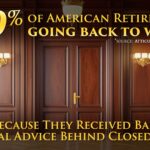The concept of diminishing returns is one of the oldest tenets of economics. It states that if one factor in production is continually increased while all others remain stable, the results of that production will become smaller and smaller.
The United States realized this during its three separate quantitative easing (QE) programs. During QE1, gross domestic product and production grew, while unemployment fell drastically. But when QE2 and QE3 came around, production and employment remained stable, while GDP declined slightly.
Now it’s the Europeans’ turn. Despite numerous objections, the European Central Bank (ECB) announced its own quantitative easing program last week—one that will begin in March and last through at least June 2016 while creating bond purchases of about 1.1 trillion euros (about $1.25 trillion). According to Newsweek, even the ECB itself regards QE as a ‘necessary evil’ to fight off continued deflation in the Euro zone.
The problem is that quantitative easing has become less of a strategy and more of an expected reaction to times of financial crisis. Even the stock markets aren’t fooled—the excitement over European QE lasted exactly one day last week before prices turned downward again.
Most Europeans are aware that QE is a high-risk means of trying to stimulate a struggling economy. One of the greatest risks is creating larger fractures amongst the already-tense relationships of the 19 countries that comprise the Eurozone.
- Germany—the largest Eurozone economy—is on record as being opposed to any quantitative easing measures.
- Switzerland made good on its threat to abandon the unilateral cap on the value of its own currency, the Swiss franc, against the Euro.
- Greece recently held an election in which Syriza, the radical left-wing party, received the most seats of any political faction in the country’s Parliament. Many experts believe Syriza favors a Greek exit from the Euro currency altogether.
When the United States embarked upon its own controversial QE program, the Federal Reserve made a unilateral decision intended to jump-start the world’s largest economy. Contrast that with the situation in Europe, where 19 different economies of all shapes and sizes will be affected in different ways by this change in policy. As we’ve seen, at least a few policymakers in the affected nations are taking steps to avoid the potentially negative consequences.
The ECB hopes that quantitative easing will stop the growing fears of deflation and boost economic growth. But the early returns are not encouraging—the stock markets have already factored in QE, while individual economies are hedging their bets. By the time the program wraps up in the summer of 2016, the economic climate in Europe will almost certainly look different. Investors can only hope it’s for the better.













